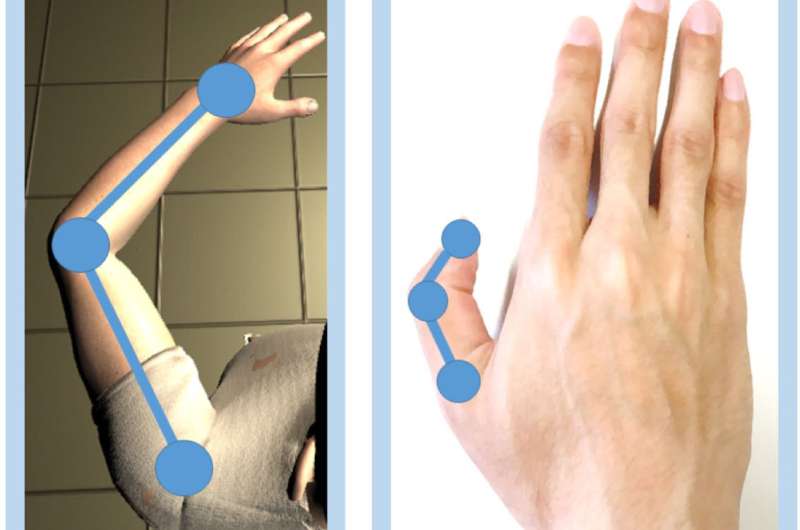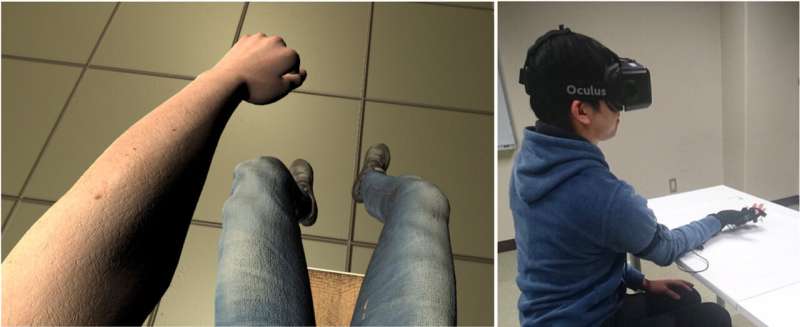Re-association of body parts using virtual reality

A multi-institutional research team reports that a re-association of the right thumb with a virtual left arm can be induced by visuo-motor synchronization in a virtual environment; however, this re-association may be weaker than natural association. This study contributes to the expanding perspectives on body schemes of augmented humans and understanding their limitations. Body-part re-association can be applied to developing functional prostheses and embodied tools in future. This research was published in the open access journal Frontiers in Robotics and AI in 19th March 2020.
Illusory body ownership can be induced by visuo-motor synchrony; It appears as if a virtual body is one's own body if the virtual body moves synchronously with one's movements. It is possible to have illusory body ownership to various bodies with different appearances, including a transparent body (Kondo, et al., Scientific Reports, 2018). However, in most studies, virtual body parts were associated with the corresponding actual body parts. For example, the virtual left arm was synchronously moved with the actual left arm.
The research team focused on the difference in correspondence between the actual and virtual body parts. In 2017, Sasaki, Inami et al. (SIGGRAPH 2017) created two additional robot arms by controlling them with left and right foot movements ("MetaLimbs'). However, the sense of ownership of the robotic arms has not been investigated in detail. The team aimed to investigate whether illusory body ownership can be induced by body part re-association at different levels of the human body hierarchy—a virtual left arm and the actual right thumb.
Twenty participants moved the right thumb voluntarily when they observed a virtual left arm through a head-mounted display for five minutes. The virtual left arm was either synchronized or asynchronized with the right thumb. It was found that participants felt as if their right thumb had become the left arm and the virtual left arm was a part of their own body in the synchronous condition. However, the sense of ownership was not very strong, suggesting that the re-association of different body parts may be weaker than natural association. This may be because the re-association was performed for only five minutes in the experiment.

This study contributes to expanding perspectives on human body or body scheme and offers the means to investigate potentials and limitations of augmented humans. The body-part re-association may be applied to developing functional prosthesis and embodied tools in future.
More information: Ryota Kondo et al, Re-association of Body Parts: Illusory Ownership of a Virtual Arm Associated With the Contralateral Real Finger by Visuo-Motor Synchrony, Frontiers in Robotics and AI (2020). DOI: 10.3389/frobt.2020.00026


















